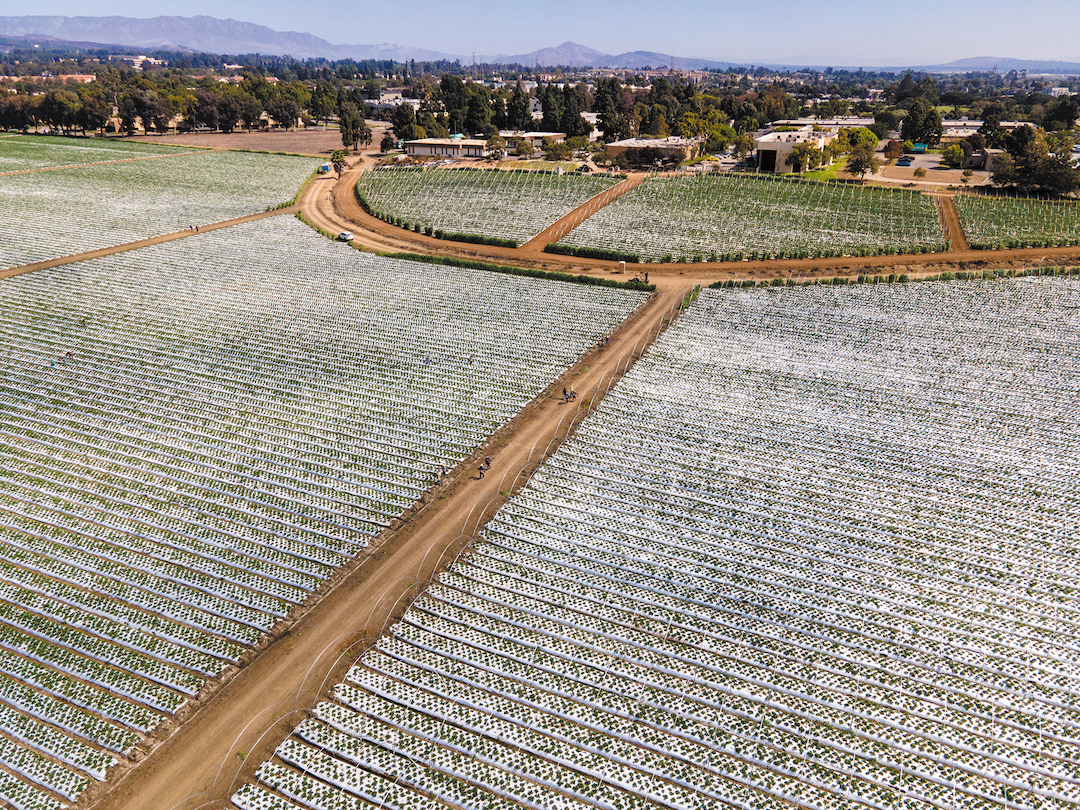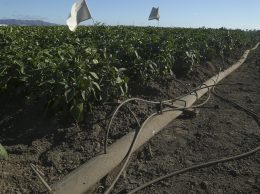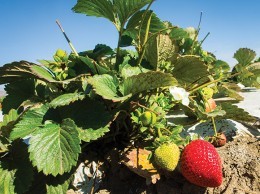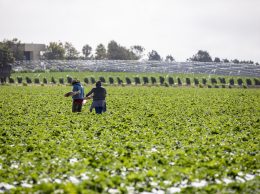Fertilizers double and even triple in price due to war, pandemic, inflation
IN THIS ARTICLE
- Agribusiness Topic
- Jorge Mercado Author
By Jorge Mercado Thursday, May 5th, 2022

California farmers have had their share of troubles, with persistent drought and the COVID-19 pandemic shaking the industry in recent years. In 2022, Russia’s invasion of Ukraine has driven up the cost of fertilizer, which was already spiking, to record amounts.
In addition to sunlight and water, crops need three key nutrients: nitrogen, phosphorous and potassium. Those typically come from fertilizers, and according to the U.S. Department of Agriculture, three kinds of fertilizer have dramatically increased in price over the past year: urea, which is up 149%; liquid nitrogen, which is up 192%; and anhydrous ammonia, which is up 235%.
That study was done in February, before the war in Ukraine and sanctions against Russia pushed prices even higher. Russia is the world’s top exporter of nitrogen fertilizer and the second biggest exporter of phosphorus and potassium fertilizers, according to the United Nations.
“The supply of chemical fertilizers is a really big concern and there’s global impacts to that,” Maureen McGuire, CEO of the Ventura County Farm Bureau, told the Business Times. “We have a global supply chain for fertilizer that includes China, Russia, and Ukraine, so when there’s supply chain problems there, then the impact of that is that fertilizer becomes unavailable or extremely expensive and we even dip into some kind of reserves.”
Making fertilizer more affordable is a “top priority” for the Farm Bureau and other advocates, she said.
“The fertilizer costs have been in the triple digits and even over 100% increases on some types of fertilizer,” McGuire said. “It affects the industry as a whole because all of the crops for all plants require phosphorus and nitrogen to grow, so if you’re doing commercial agriculture, you’re going to be affected by fertilizer price increases.”
Rick Shade, the owner of Shade Farm Management in Carpinteria, said he has had to cut fertilizer use on 2,000 acres of avocado orchards that he manages in Santa Barbara and Ventura counties.
“Fertilizer prices just adds a huge increase in the costs of production, along with the price of diesel and other fuel, and it narrows our profit margin even more or puts us in the red,” Shade said. “Like people, trees and all crops need to eat, and this puts a further pinch on it.”
As an alternative to chemical fertilizers, Shade said he’s been looking at things his grandfather used to do, such as mulches and cover crops, which are crops that are planted to cover the soil rather than for the purpose of being harvested.
“Here on the South Coast, we don’t have good access to manure from animal farming and there’s a lot of diesel involved in trucking it here, so that that doesn’t really help,” Shade said. “My colleagues over in the San Joaquin Valley that may have access to the manure, they have water issues like everybody else, so we’re getting slammed on every side right now.”
As fertilizer prices increase, it could lead to an even bigger price hike for consumers, combined with the impact of inflation, fuel costs and extra costs brought on by the pandemic.
“All those issues morphed into much higher food prices in the last year and it’s going to get worse before it gets better,” Shade said.
The region’s biggest crop is strawberries, which shouldn’t be affected by the fertilizer costs as much as avocados and other tree crops, McGuire said. Strawberry prices tend to be more stable than other crops, she said, since they function as a loss leader for many retailers, attracting shoppers to grocery aisles.
The price increase could be seen in other crops, however.
“What prices will happen will probably be absorbed in ways that we don’t even know yet,” McGuire said.
She said she is confident that farmers can find a solution to ensure this problem doesn’t become a huge issue in the long term.
“There’s been a lot of discussion around increased interest in chemical fertilizer alternatives or even selecting different crops based on what fertilizer is available,” she said. “But I think that really it’s growers hunkering down to make sure that our fresh fruits and vegetables continue to be grown.”
McGuire said the Farm Bureau has been focused on providing farmers with continual information on fertilizer prices so they can make the best decisions possible.
“It’s really important that we continue to invest and farming row crops, fruits and vegetables here because we’re supplying to the rest of the United States,” she said. “The more that we can acknowledge the global system that we’re in and help farmers navigate that, the more stable our food supply system is to help feed everyone.”












